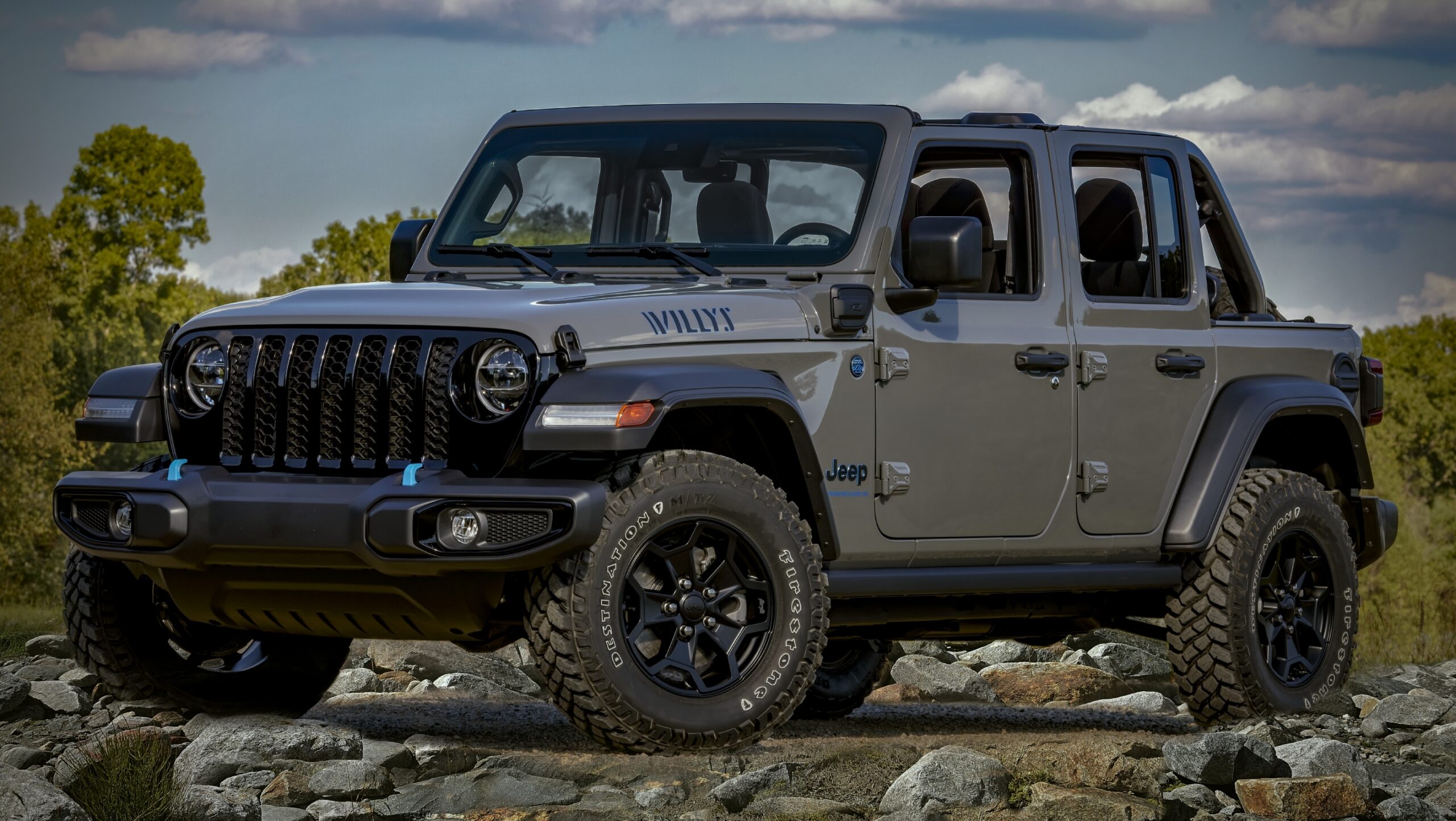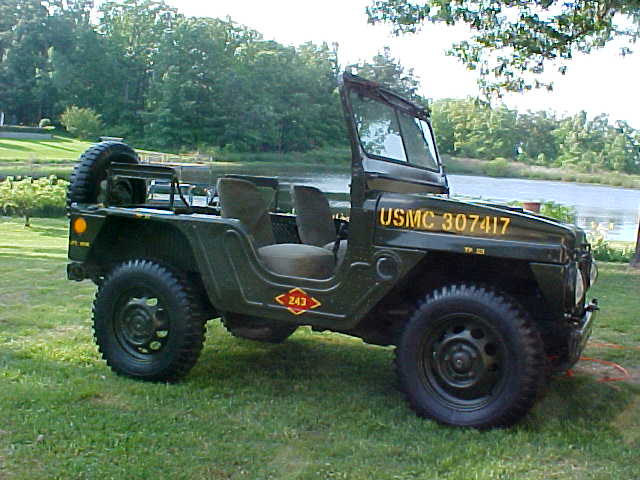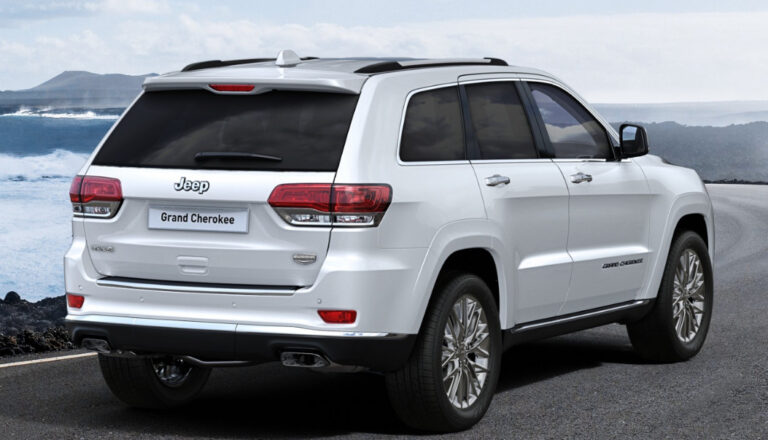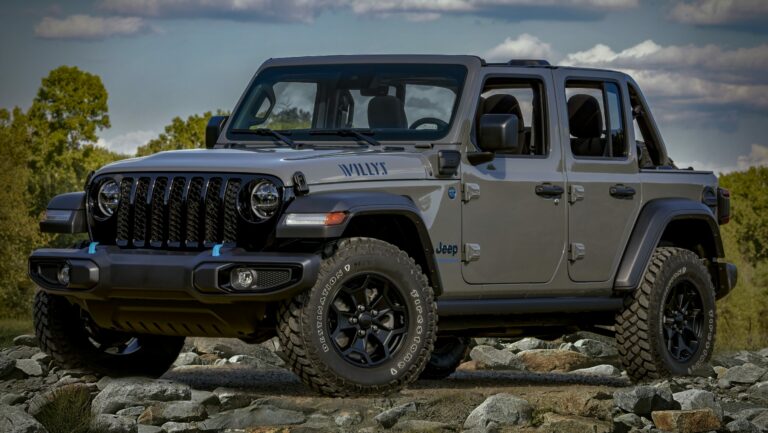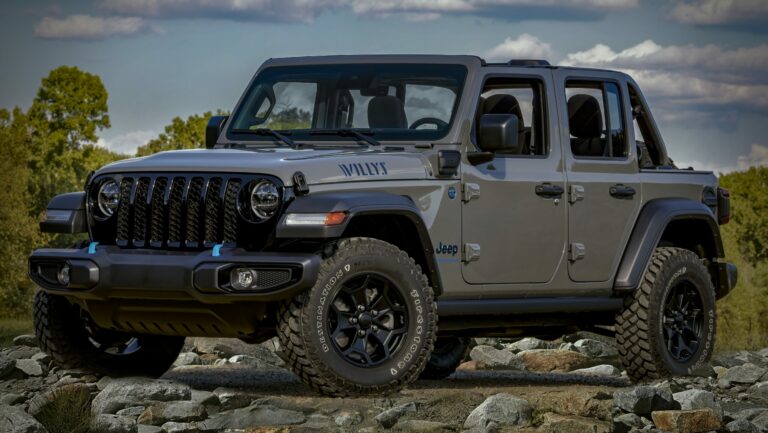Jeep CJ7 Rock Crawler For Sale: Your Ultimate Guide to Off-Road Dominance
Jeep CJ7 Rock Crawler For Sale: Your Ultimate Guide to Off-Road Dominance jeeps.truckstrend.com
For the uninitiated, the term "Jeep CJ7 Rock Crawler" might conjure images of an old, battered vehicle teetering precariously on impossible terrain. For the seasoned off-road enthusiast, however, it evokes a sense of rugged capability, legendary heritage, and the thrill of conquering nature’s most formidable obstacles. A Jeep CJ7, specifically modified for rock crawling, is not just a vehicle; it’s a meticulously engineered beast designed to navigate boulders, scale vertical ledges, and traverse treacherous landscapes where ordinary 4x4s fear to tread.
The CJ7, produced by Jeep from 1976 to 1986, holds an almost mythical status in the off-roading community. Its relatively short wheelbase, robust frame, and classic, no-nonsense design made it an ideal candidate for extreme customization. When you see a "Jeep CJ7 Rock Crawler For Sale," you’re not just looking at a used car; you’re often eyeing a highly specialized, custom-built machine, painstakingly crafted to excel in the most demanding off-road environments. This article serves as a comprehensive guide for anyone considering diving into the thrilling world of CJ7 rock crawling, whether you’re looking to buy a pre-built rig or understand what goes into creating one.
Jeep CJ7 Rock Crawler For Sale: Your Ultimate Guide to Off-Road Dominance
The Enduring Legacy of the CJ7: Why It Rocks
The Jeep CJ7 represents a pivotal moment in Jeep’s history, bridging the gap between the utilitarian CJ5 and the more comfort-oriented Wranglers. Its slightly longer wheelbase than the CJ5 (93.5 inches vs. 83.5 inches) offered improved stability without sacrificing the nimble maneuverability crucial for technical trails. This balance, combined with its simple, body-on-frame construction and ample aftermarket support, cemented its place as a perennial favorite for customization.
For rock crawling, the CJ7’s inherent strengths are amplified through extensive modifications. Its solid axles and leaf spring suspension (in stock form) provide a sturdy foundation for lifts and articulation upgrades. The iconic open-top design, removable doors, and fold-down windshield contribute to an immersive off-road experience, connecting the driver directly with the trail. More than just a vehicle, the CJ7 embodies a spirit of adventure and a connection to Jeep’s rugged origins, making it a truly special platform for a dedicated rock crawler build.
What Makes a CJ7 a "Rock Crawler"? Key Modifications & Features
Transforming a vintage CJ7 into a competent rock crawler involves a meticulous and often expensive array of modifications. These aren’t just cosmetic enhancements; they are functional upgrades designed to dramatically improve the vehicle’s capability, durability, and safety on extreme terrain.
- Suspension Systems: This is perhaps the most critical component. While stock CJ7s came with leaf springs, serious rock crawlers often feature custom coilover conversions, long-arm suspensions, or even four-link setups for maximum articulation and wheel travel. High-performance shocks (like bypass or remote reservoir units) are essential for damping and control over rough terrain. Lift kits are employed to clear larger tires and improve approach/departure angles.
- Axles & Gearing: Stock CJ7 axles (typically Dana 30 front, AMC 20 or Dana 44 rear) are often insufficient for the stresses of crawling with large tires. Common upgrades include heavy-duty Dana 44s, Dana 60s, or even custom-built axles. These are paired with lower gear ratios (e.g., 4.88, 5.13, 5.38) to multiply torque at the wheels, allowing the vehicle to crawl slowly and powerfully. Differential lockers (such as ARB Air Lockers or Detroit Lockers) are indispensable, ensuring both wheels on an axle receive power simultaneously, preventing wheel spin on uneven surfaces.
- Tires & Wheels: Large, aggressive off-road tires (often 35 inches or larger in diameter) with deep, open treads are fundamental for grip on rocks and loose surfaces. Beadlock wheels are a popular choice as they mechanically clamp the tire bead to the rim, allowing for extremely low tire pressures (for maximum traction) without the risk of the tire coming off the wheel.
- Powertrain Upgrades: The original inline-six or V8 engines might be retained for milder builds, but many serious crawlers feature engine swaps for more power and reliability. Popular choices include modern GM LS series V8s, Ford small blocks, or robust diesel engines. These are typically mated to heavy-duty manual transmissions (like the NV4500 or SM465) and extremely strong transfer cases (such as an Atlas II or NP205) that offer very low "crawl" ratios for precise control.
- Body & Chassis Protection: Rock crawling inherently involves contact with obstacles. Essential protection includes heavy-duty skid plates for the engine, transmission, and transfer case; rock sliders along the rocker panels; and custom steel bumpers that improve approach/departure angles and provide recovery points. A full roll cage, often integrated into the frame, is crucial for occupant safety in the event of a rollover.
- Steering & Braking: Larger tires and difficult terrain put immense strain on steering components. Hydraulic assist steering (or full hydraulic steering) is common to reduce effort and provide more robust control. Upgraded brakes (disc brakes on all four corners, larger rotors, and calipers) are necessary to stop heavier vehicles with larger tires, especially on steep descents.
- Recovery Gear: A powerful winch (8,000-12,000 lbs minimum) mounted on a custom bumper is non-negotiable. Other essential items include recovery straps, shackles, a high-lift jack, a shovel, and a well-stocked tool kit.
![]()

The Hunt: Finding Your CJ7 Rock Crawler For Sale
Searching for a Jeep CJ7 Rock Crawler For Sale requires a strategic approach, as these are niche vehicles.
- Where to Look:

- Online Marketplaces: Facebook Marketplace, Craigslist, and dedicated off-road forums (e.g., Pirate4x4, Expedition Portal, local Jeep clubs’ forums) are excellent starting points.
- Specialty Dealers/Builders: Some shops specialize in building and selling custom off-road rigs.
- Auctions: Online and live auctions can sometimes yield gems, but often come with less opportunity for thorough inspection.
- Word-of-Mouth: Networking within the off-road community can uncover private sales.
- Inspection Checklist – Crucial Considerations:
- Frame Integrity: Inspect the frame meticulously for rust, cracks, bends, or poor repairs. This is the foundation of the vehicle, and frame damage can be catastrophic.
- Weld Quality: On custom fabrication (roll cage, suspension mounts, bumpers), examine welds for consistency and penetration. Poor welds indicate a shoddy build.
- Driveline Components: Check for leaks around axles, transfer case, and transmission. Look for excessive play in U-joints, driveshafts, and steering components.
- Engine & Transmission Health: Listen for unusual noises. Check fluid levels and condition. Ask for maintenance records if available.
- Electrical System: Heavily modified vehicles often have complex wiring. Ensure all lights, gauges, and accessories work.
- Paperwork: Verify the title is clear and that the vehicle’s VIN matches. Understand local regulations regarding modified vehicles for street legality.
- Test Drive: If possible, test drive it on varied terrain, including some minor obstacles, to assess its performance, noises, and handling.
Buying a Built vs. Building Your Own: A Strategic Decision
This is a fundamental choice for aspiring CJ7 rock crawler owners, each with distinct advantages and disadvantages.
- Buying a Built Rig:
- Pros: Instant gratification – you can hit the trails immediately. Potentially cheaper than building from scratch, as the previous owner absorbs the depreciation of parts and labor. The vehicle’s capabilities are already proven.
- Cons: Unknown build quality – you’re relying on someone else’s craftsmanship. There might be hidden issues or shortcuts taken. The rig might not perfectly match your specific vision, preferred trail type, or driving style. Maintenance history might be spotty.
- Building Your Own Rig:
- Pros: Tailored to your exact specifications, preferences, and local trail conditions. You know the quality of every component and every weld. It’s a fantastic learning experience in vehicle mechanics and fabrication.
- Cons: Extremely time-consuming, requiring significant mechanical skill, tools, and a dedicated workspace. Often significantly more expensive than buying a comparable pre-built rig due to the cumulative cost of parts and labor. The project can easily spiral out of control in terms of budget and timeline.
Important Considerations & Legalities
Owning a CJ7 rock crawler isn’t just about trail performance; it comes with practical and legal considerations.
- Street Legality: Heavily modified vehicles often face strict regulations regarding lift height, tire coverage, emissions, and safety inspections. Laws vary significantly by state and country. Research your local laws thoroughly before purchasing or building. Some extreme crawlers are strictly "trailer queens" and not street legal at all.
- Insurance: Insuring a highly modified or custom-built vehicle can be challenging. Standard insurance policies might not cover the extensive aftermarket parts. You may need specialized off-road or classic car insurance.
- Maintenance: Rock crawlers are subjected to immense stress. They require constant vigilance, regular inspections, and often specialized tools and knowledge for maintenance and repairs. Parts might be custom-fabricated or require sourcing from specialty suppliers.
- Trail Etiquette & Safety: Always wheel responsibly, respect private property, and tread lightly. Never wheel alone. Always carry comprehensive recovery gear and communicate with your trail mates. Safety should be paramount.
Practical Advice and Actionable Insights
- Define Your Needs: What kind of trails do you plan to run? What’s your budget? What’s your mechanical skill level? Answer these questions before you start looking.
- Do Your Homework: Research common CJ7 issues, popular modifications, and reputable builders. Join online forums and local off-road clubs to learn from experienced enthusiasts.
- Get a Professional Inspection: If buying a pre-built rig, invest in a pre-purchase inspection by an independent mechanic or off-road shop specializing in custom builds. They can spot issues you might miss.
- Factor in Hidden Costs: Beyond the purchase price, budget for insurance, ongoing maintenance, potential immediate repairs, and any desired post-purchase upgrades.
- Be Patient: The right CJ7 rock crawler for sale won’t appear overnight. Take your time, inspect thoroughly, and don’t settle for something that doesn’t meet your criteria.
Price Table: Jeep CJ7 Rock Crawler For Sale
The price of a Jeep CJ7 rock crawler varies wildly based on the extent and quality of modifications, the condition of the base vehicle, and the components used. This table provides a general guideline:
| Condition/Build Level | Estimated Price Range (USD) | Key Characteristics |
|---|---|---|
| Project/Basket Case | $5,000 – $15,000 | Needs extensive work, rusty frame, missing parts, significant mechanical issues; suitable for a full ground-up build. |
| Mildly Built/Trail Ready | $15,000 – $25,000 | Moderate lift (2.5-4"), larger tires (33-35"), minor axle upgrades, basic armor; capable for moderate trails. |
| Moderately Built/Capable Crawler | $25,000 – $40,000 | Significant lift (4-6"+), upgraded axles (Dana 44/60), front/rear lockers, V8/LS engine swap (common), heavy-duty transmission/transfer case, full skid plates, rock sliders. |
| Highly Built/Comp-Ready | $40,000 – $70,000+ | Custom suspension (coilovers, 4-link), full integrated roll cage, massive tires (37"+), high-horsepower V8/LS engine, Atlas transfer case, full hydraulic steering, custom tube work. |
| Show Quality/Professional Build | $70,000 – $100,000+ | Top-tier components, meticulous fabrication, often built by renowned shops, can be competition-ready or collector-grade. |
Note: These are estimated ranges and actual prices can vary based on location, market demand, and the specific history of the vehicle.
Frequently Asked Questions (FAQ)
Q: Is a CJ7 a good first rock crawler for a beginner?
A: While iconic, a heavily modified CJ7 rock crawler can be complex to drive and maintain due to its age and extensive modifications. A less extreme 4×4 might be a better starting point for a complete beginner, but with proper instruction and a well-built CJ7, it can certainly be an exciting first dedicated crawler.
Q: What’s the typical fuel economy of a CJ7 rock crawler?
A: Abysmal. With heavy V8 engines, large tires, low gearing, and significant weight, expect single-digit miles per gallon (e.g., 6-10 MPG). These vehicles are not designed for efficiency.
Q: Are parts readily available for CJ7s?
A: For stock replacement parts, yes, many are still available through aftermarket suppliers. However, for highly specialized rock crawling components, you’ll often be relying on specialty fabrication shops, custom orders, or niche aftermarket manufacturers.
Q: Can I daily drive a CJ7 rock crawler?
A: Generally, no. Heavily built rock crawlers are typically loud, have a rough ride, poor fuel economy, and limited creature comforts. They are best suited for trail use and being trailered to and from the off-road park. Some milder builds might be "street legal," but few are genuinely comfortable for daily commuting.
Q: What are the common rust spots on a CJ7 I should check?
A: Pay close attention to the frame (especially near spring hangers and body mounts), the floorboards of the body tub, rocker panels, the windshield frame, and behind the front fenders. Rust can severely compromise structural integrity.
Conclusion
The appeal of a Jeep CJ7 Rock Crawler For Sale extends far beyond simple transportation; it’s an invitation to an exhilarating lifestyle, a testament to automotive heritage, and a masterclass in custom engineering. Whether you’re drawn to the raw power of its modified drivetrain, the articulation of its purpose-built suspension, or the sheer joy of conquering seemingly impassable terrain, the CJ7 rock crawler delivers.
However, entering this world requires a clear understanding of the commitment involved. Research, diligent inspection, and a realistic budget are paramount. By carefully considering the various aspects discussed in this guide, you can make an informed decision and embark on your own epic adventures, confident in the capabilities of your legendary Jeep CJ7 rock crawler. It’s more than just a vehicle; it’s your ticket to the wild side.

